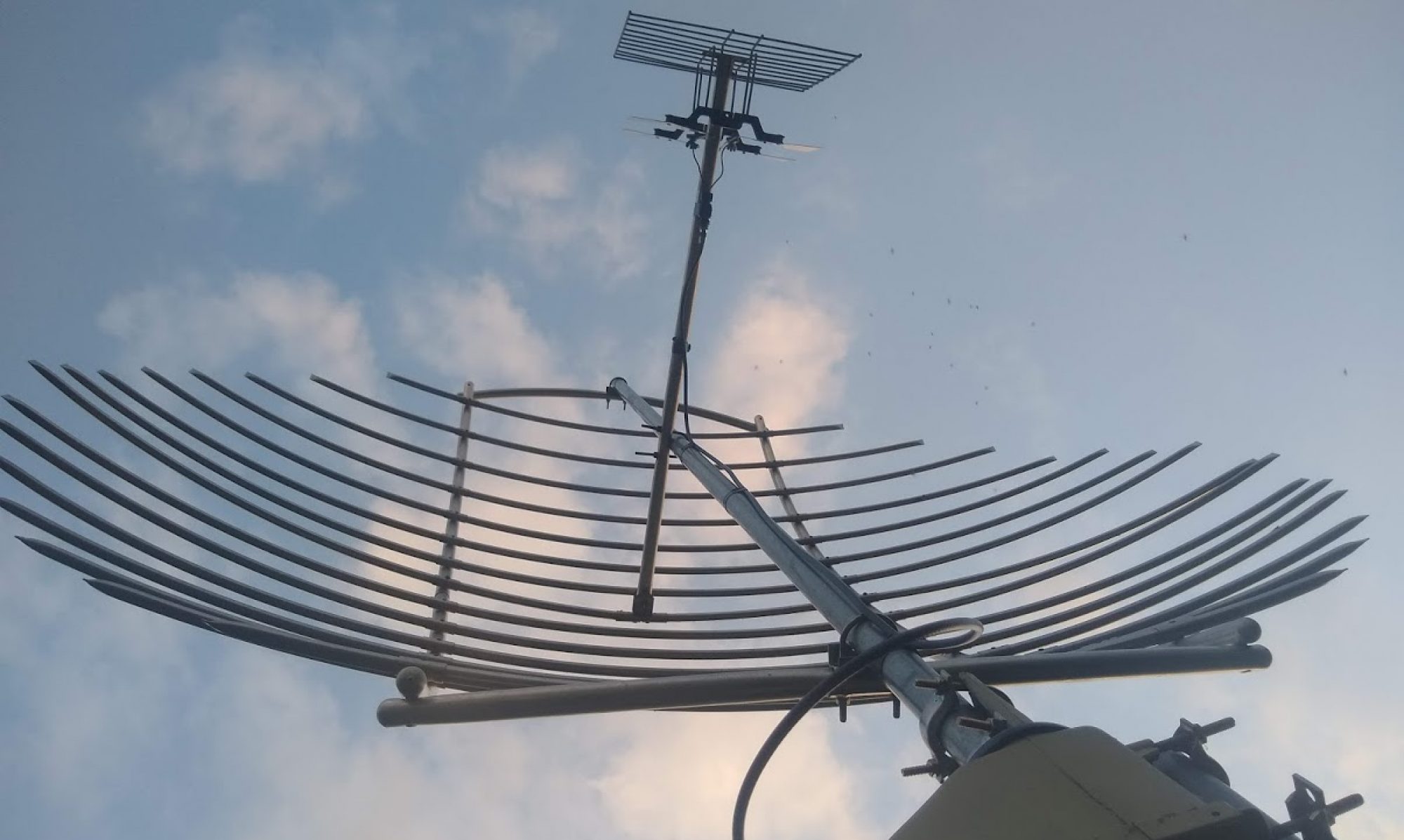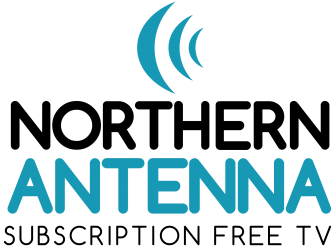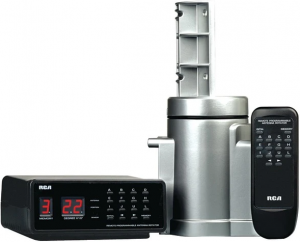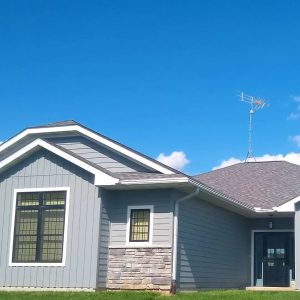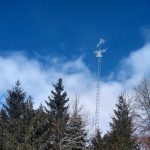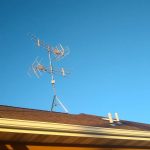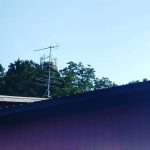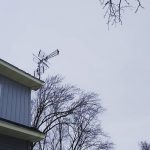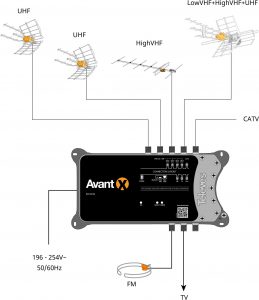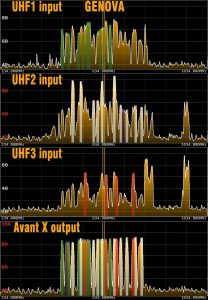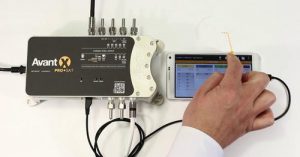I really want the antenna installed in my attic. Will that work?
In many cases, yes! If you are within about 45 miles of the transmitters, have good signal level (ie, not in a valley) and you DON’T have a metal roof or foil-backed insulation, we can probably make it work. For lower signal locations, it is imperative to get outside and above the roof line to capture as much signal as possible.
My HOA won’t let me install an antenna outdoors (and an attic antenna won’t work at my location)
The FCC’s Over-the-Air Reception Devices Rule (OTARD) overrides your HOA’s restrictions. You have a right to install the following on the roof you own or in an exclusive use area:
-TV Antennas (Any size; up to 12′ mast)
-Satellite dishes (≤1M/39″ diameter)
-Fixed wireless antennas (≤1M/39″ diameter)
(also see the FCC’s FAQ on OTARD rules)
I want to cut my Cable TV, but want to keep my Cable Internet/phone. Will that work?
Yes! We can connect the Cable line directly to the modem and then connect your TV outlets to the antenna.
I’ve got a TV/projector/monitor without a digital tuner. How can I receive digital TV?
You can purchase a separate Digital TV Tuner box, available for around $35 from Menards, Amazon and other retailers.
I want to get rid of my Cable/Satellite, but want to retain DVR functionality.
There are a number of great DVR options available. Please see our DVR page for more information.
I’m looking to purchase a new TV. Which brand offers the best over-the-air viewing experience?
The tuners in most modern sets are pretty close in terms of reception performance. However, we’ve found that LG, Samsung and Sony sets tend to have a slight edge over most other brands.
In terms of overall experience, our vote goes to Samsung for their overall ease of use, on-screen program guide and fast channel switching, in addition to the top-quality tuning section.
I’ve tried a few antennas and nothing seems to work very well. I’m not getting all my channels and/or they keep breaking up. They’ll come in fine one day and not work the next. I just want reliable reception on everything. What makes a professionally-installed
outdoor/attic antenna better than the stuff I’ve tried?
1)We run a computerized signal prediction for your location and select a properly-sized antenna, ensuring that it will receive more than enough signal for reliable reception.
2)We mount the antenna in an attic or rooftop, far away from obstructions to the signal and sources of electrical interference, which often impede reception indoors.
3)We use tools such as signal meters and spectrum analyzers to verify that you’re getting good, clean signal on every channel.
4)We use amplification to compensate for the loss of the splitters and wiring, maintaining excellent signal quality throughout the system.
5)We also verify results on all system outlets, replacing improperly-installed connectors and other defective components as needed. When necessary, we also install filters to keep strong local cell phone and FM radio signals from degrading reception quality.
The end-result of a properly designed and installed antenna system is that it provides strong signals on every available channel with wide amounts of “fade margin,” meaning that your reception will be completely unaffected by slight changes in reception conditions which wreak havoc on under-performing antenna setups.
I’ve got an old antenna. It doesn’t work/barely works. What can be done?
There could be any number of things going on with it:
-It could be just a VHF antenna. In which case, we may need to add a UHF antenna to receive all available channels (most stations now broadcast on UHF).
-Cable could be damaged and in need of replacement.
-Cable connections could be corroded, in need of re-termination.
-Preamplifiers and amplifiers may be dead or failing.
-The antenna may be aimed in the wrong direction.
We could go on. In many cases, we can repair the existing installation and save you $ over a brand new installation.
I’m not convinced that even a professionally-installed antenna would work in my situation. I want to be absolutely sure it will get reliable reception before spending the money; I don’t want to be stuck with something that only kinda works. Can you offer my a guarantee?
1)With every installation, we run a detailed signal analysis before we even get you an estimate (running a signal prediction report and using satellite imagery to analyze tree cover, topography and other obstructions). This gives us a pretty good idea what we might be dealing with.
2)On-site, we’ll verify signal levels before making the installation permanent. If we get on-site and find there isn’t usable signal, we won’t charge you – that’s on us.
3)We offer a 45-day money-back trial period – meaning that if you’re not happy with your antenna system, we’ll refund your money and remove the system.
I have multiple TV markets available at my location and I want to receive them all. What are my options?
1. Rotator-controlled system. One option is to install a single, high gain, uni-directional antenna on a motorized antenna rotator. A control unit inside the house allows you to re-orient the antenna at the touch of a button. Just re-scan the channels on your TV and you’re ready to watch a different market.|
2. Multi-antenna system. Another option is to install multiple antennas, aimed at the desired TV markets. In some cases, antennas can be combined together passively. For more complex systems, a Televes Avant X or Televes SmartKom programmable amplifier is employed, filtering to allow only the desired channels from each antenna, dynamically balancing levels between channels and shifting frequencies when multiple channels available on the same frequency – combining up to 4 separate TV antenna and an FM antenna input for distribution to all your TVs.
There’s a bunch of coax cabling in my house. Nothing’s labeled – I don’t know where anything goes. It was put in a long time ago. Will it still work or do you need to put in new stuff?
We’ve got specialized signal locator tools to figure out what cables go where. We can make sense of it all! For the most part, the coax already in place will work just fine. The most we might have to do is ensure that there are proper connectors on either end (usually not an issue if was used previously for Cable or Satellite).
I have Satellite TV and it will go out during heavy rain or snow storms. Does Over-The-Air TV do that?
No! Over-The-Air TV is broadcast on much lower frequencies than Satellite TV and is immune to the so-called “rain-fade” that plagues consumer satellite TV services.
I have TV sets in rooms where there there is no coax outlet. Can you add a jack in that room? Is there a way I can watch antenna TV wirelessly?
In many cases, we can install a coax jack to rooms/locations that don’t currently have one. This may require an additional up-charge from the base price for antenna system installation. Please be sure mention this when contacting us.
Alternatively, a network-connected DVR system can be added, which allow smart TVs and other devices to watch both live and recorded content over WiFi.
Will I save money by going to *big box store* and purchasing supplies for you to install?
No! We shop around and purchase everything in quantity, often direct from the manufacturer. We can offer you better quality at lower prices than most retail offerings.
I’m thinking of purchasing *antenna from big box store* Will you install it for me?
We’ve spent good deal of time testing various antennas and know what works best. The antennas we stock are more durable, better performing and in some cases, significantly less expensive than the models you’ll find at the big box stores. Since we value customer satisfaction and warranty our work, we only install properly-sized antennas from reputable manufacturers. We WILL NOT install antennas that are under-performing for the location or prone to mechanical/electrical failure.
I’m a serious DIYer – can you just sell me parts?
Yes. We ask that you contact us with your address, so we can run a signal prediction and advise you on what will work best for your location. Parts sales are by appointment. Please note: antenna installation is a rather exacting science, with little room for error. We can guarantee that our products work properly. We can’t guarantee you’ll install them properly.
I live at the bottom of a river valley. Is my situation completely hopeless or is there something you can do?
Every situation is different, which is why we need to run a signal prediction for your exact location. We might find that the terrain may block signals from one, but channels in another direction might still come in. Please contact us and we’ll be happy to run a signal prediction to see if there might be signal available at your location
How does the picture quality of an antenna compare to cable or satellite?
Broadcasts are 100% digital, so there’s no static or interference. High Definition network channels can look significantly better, as they are often much less compressed than their Cable/Satellite counterparts. Most sub-channel networks are available in DVD-quality Standard Definition.
My current antenna system has a rotator. How do I use it?
Please see our Rotator FAQ.
How do I set up my TV or Tuner to receive Over-The-Air channels?
Please see our TV & Tuner Setup page.
What are sub-channels? How do I tune them?
Think of a digital TV channel as a fixed-bandwidth data pipe. The broadcaster can allocate it any way they see fit, offering one or more “sub-channels” on a given channel. In many cases, the broadcaster chooses to use most of the bandwidth for the main High Definition channel (ie. the *.1 channel). With the leftover bandwidth, they choose to broadcast additional, often Standard Definition “sub-channels” (*.2, *.3, etc). Some TVs display sub-channels with a “.” (ie, “4.2”) while others display it as a “-” (ie, “4-2”). The “.” or “-” key is included on most remotes to allow you to tune sub-channels directly. Often, typing the main channel number (ie, “4”) will tune to the first sub-channel (ie, 4.1).
I tuned in a particular sub-channel and the TV says it’s “audio-only”
Some sub-channels are, in-fact, audio-only. This is relatively rare. On older sets in particular, subchannels broadcasting using the newer MPEG-4 video compression standard may trigger an “audio only” message, as the set is incapable of decoding the new video standard. See our Audio-only Subchannels and MPEG-4 Subchannels pages.
What does the signal meter on my TV measure? How do I interpret the results?
Contrary to popular perception, the signal meter on your TV DOES NOT measure signal strength, but rather signal’s quality – also known as the signal-to-noise ratio (SNR), expressed in decibels (dB). As the name suggests, this is a measurement of how much stronger the signal is relative to the noise floor. A SNR of 15dB or better is required to decode a channel without errors. An SNR in the mid-to-low 20s is needed for reliable reception, while SNRs of >30dB can be achieved in areas with moderate-to-strong signal levels.
Samsung, Sony and Toshiba have signal meters which display signal-to-noise ratio in dB. Some other manufacturers display signal-to-noise ratio as a percentage out of 100% or as segments on a bar graph. Some manufacturers, unfortunately, omit the signal meter entirely.
What is the future of broadcast TV? Is an antenna system really a good investment?
Free broadcast TV is not going anywhere. In fact, it’s going to get even better! Broadcasters are currently using the ATSC 1.0 standard, which allows them to broadcast up to a 1080i picture and 5.1 surround sound. Within 5-10 years, broadcasters will move to the ATSC 3.0 (NextGenTV) standard, which will allow for broadcast of 4k/60fps/HDR picture, Dolby Atmos sound, additional sub-channel content, interactive features and even more robust signal reception. The best part: The new standard is completely compatible with existing antenna systems!
With the average Cable or Satellite bill running roughly $100/mo, most antenna systems will have paid for themselves well within six months, while providing years of uninterrupted service. Over-The-Air is the cheapest way to watch TV and it’s an investment that will pay you dividends in the long run.
Can a TV antenna receive FM radio?
Most of the TV antennas we install are not designed to cover FM frequencies. Some systems include an FM filter to keep strong local stations from overloading the amplifications stages. If you are also interested in FM reception, please let us know when contacting us. We can install a TV antenna also designed to cover FM frequencies or add a dedicated FM antenna to the system (which can be run simultaneously over the same coax cabling as the TV antenna).
I’m going to build a house/I’m remodeling a house. What kind of wiring would you recommend I put in to accommodate an Over-The-Air antenna and other technology needs?
Great question! We’ve created a detailed set of pre-wiring guidelines to answer those questions in-depth. We do offer pre-wiring services and design consultation as well.
What is LTE/Cell interference? How do I know if it’s a problem?
UHF TV channels 37-83 (608-890MHz) have been re-allocated for use by cell carriers. Antennas were designed to pick up those frequencies and preamplifiers/amplifiers were also designed to amplify them. When in close proximity to a cell tower, amplifiers (particularly the mast-mounted preamplifier) can overload, which cause picture breakups and pixelation, particularly on stations in the UHF band. In our experience, this is a very common problem! The interference can be alleviated via the installation of a specialized low-pass filter placed before the preamplifier, or replacing the preamplifier with a newer model which has integrated LTE filtering. We can accurately diagnose this type of interference with a spectrum analyzer.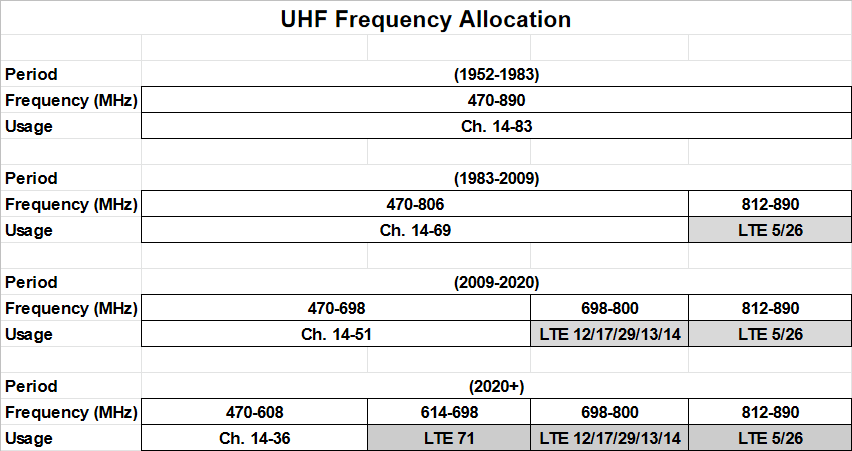
What is FM interference? How do I know if it’s a problem?
Strong local FM stations can cause amplifiers (particularly the mast-mounted preamplifier) to overload. Usually, this causes breakups and pixelation on a specific VHF-Hi channel (Ch. 7-13). This problem can be eliminated via the use of a filter. We can accurately diagnose this type of interference with a spectrum analyzer.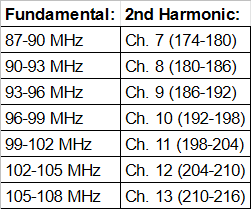
What is LED lighting/switching power supply interference? How do I know if it’s a problem?
Some poorly-designed power supplies in LED light bulbs and other household devices can create in-band electrical noise that interferes with the reception of FM radio and VHF TV channels.
This type of interference, although serious, is relatively rare (we’ve only seen a hand-full of cases that actually affected TV reception) and we’ve found that most LED bulbs DO NOT create any harmful interference. Please see our page on LED/Switching Power Supply Interference for more information.
For more information, contact us today or call: (952) 491-0643, (715) 802-6275.
